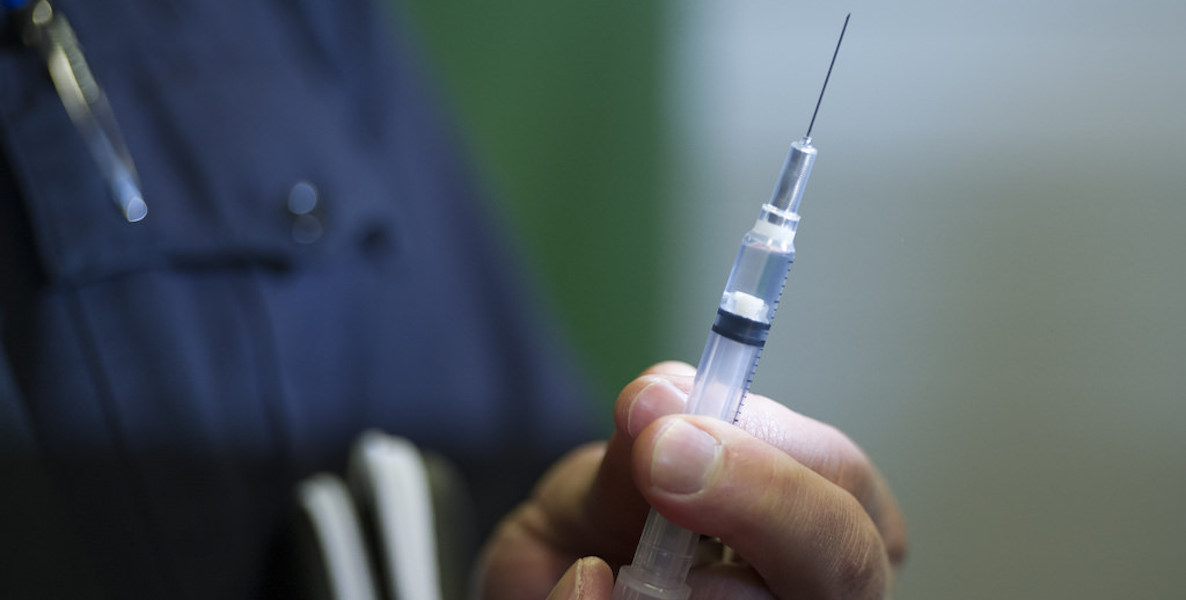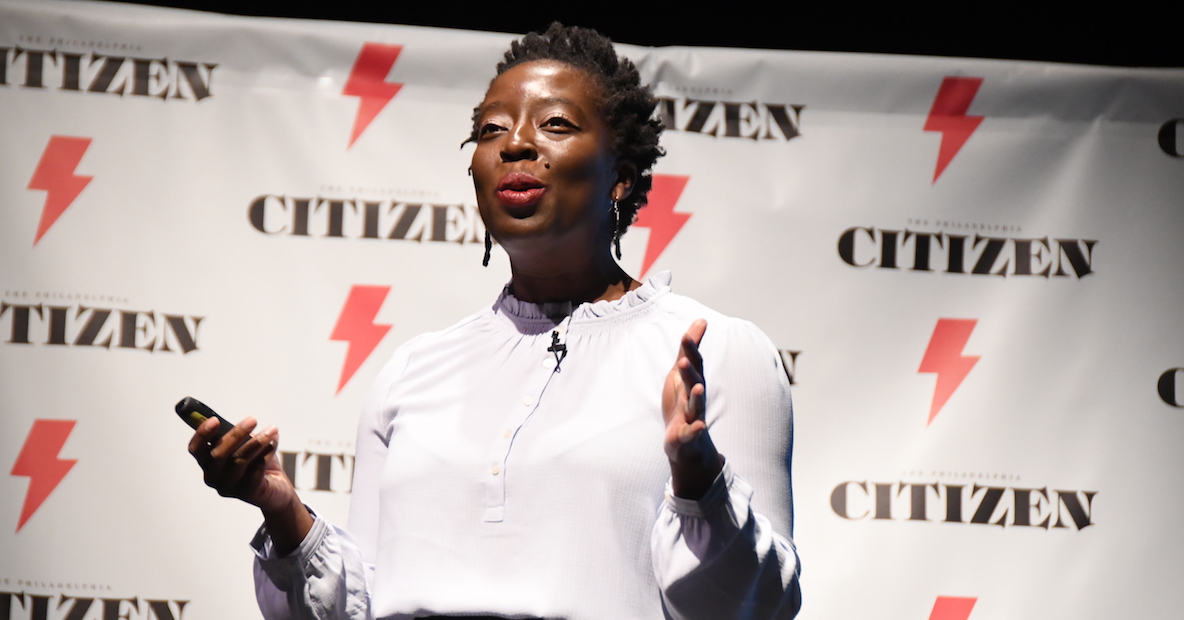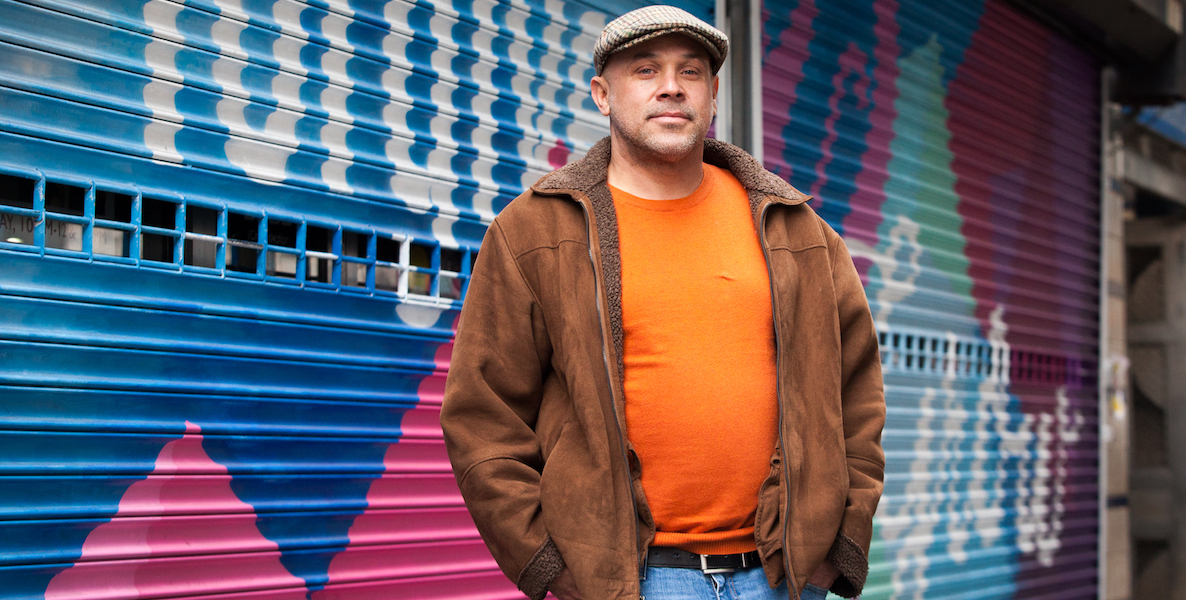In June of 2018, Julie Dees, Director of Behavioral Health at Penn Presbyterian Hospital, faced a fatal paradox in the treatment of Opioid Abuse Disorder (OUD): 2,100 patients struggling with addiction passed through Penn’s three downtown emergency departments each year. Evidence-based medication like buprenorphine, sometimes called bupe, to treat OUD existed. And the hospital had two Certified Recovery Specialists (CRSes) on staff who had been through recovery themselves, had undergone extensive training, and were ready to consult patients who needed support.
![]() But the medication was not being regularly administered or prescribed, and ER staff was not calling the CRSes to consult with patients about treatment.
But the medication was not being regularly administered or prescribed, and ER staff was not calling the CRSes to consult with patients about treatment.
“We had the people to do it and had the model in place, but our phones weren’t ringing,” says Dees. Instead, ER doctors were discharging patients with instructions to visit Penn Medicine’s walk-in addictions assessment center and to stop using drugs. While the doctors felt good about these referrals, and assumed patients entered treatment as a result, no one knew if the patients ever actually went, and the center wasn’t well-staffed enough to safely and effectively serve patients.
So on June 30, 2018, after a mandated presentation of her rationale to the city’s Division of Community Behavioral Health, Dees made a difficult decision: She closed the walk-in center.
That year, 1,116 people died in the city as a result of a drug overdose, and 84 percent of those overdoses involved opioids. Philadelphia had the highest number of opioid-related deaths of any major city in the country. You can see why, then, the decision to close the clinic brought Dees some heat from both internal and external stakeholders. “People said, ‘We are in the middle of an epidemic. Why are you getting rid of this wonderful resource?’” she recalls.
“Any other chronic disease that was coming through the hospital, if we weren’t providing evidence-based treatment, it would cause outrage,” Dees says. “It surprises me that it’s taking so long for this to become the mainstream.”
But Dees, who calls the closure of the center one of the “turning points” for treating OUD at Penn Medicine, knew what she was doing. Its closure sparked innovation that led to the creation of the Center for Opioid Recovery and Engagement (CORE), a novel approach to treating addiction that breaks down the barriers to care for doctors and their patients struggling with OUD.
Since its launch earlier this year, the number of OUD patients receiving evidence-![]() based, life-saving medication in Penn Medicine’s three downtown hospitals has more than quadrupled—from 51 patients in a year to 217 in just the last 10 months. And the number of patients Dees and her team consult in the emergency department (ED) has increased by more than 15-fold—from 30 in a year to 450 since CORE’s launch.
based, life-saving medication in Penn Medicine’s three downtown hospitals has more than quadrupled—from 51 patients in a year to 217 in just the last 10 months. And the number of patients Dees and her team consult in the emergency department (ED) has increased by more than 15-fold—from 30 in a year to 450 since CORE’s launch.
“Any other chronic disease that was coming through the hospital, if we weren’t providing evidence-based treatment, it would cause outrage,” Dees says. “It surprises me that it’s taking so long for this to become the mainstream.”
The innovation was simple but profound: They already had all the pieces they needed, but those pieces, working independently, weren’t solving the problem. As is often the case with seemingly-intractable problems, Dees and her team needed a different way to look at the barriers to success—which meant, in the end, applying common sense answers to logical questions.
To do this, Dees partnered with design strategists from the Penn Center for Health Care Innovation. Davis Hermann, a design strategist on the team, interviewed doctors, CRSes, social workers, and nurses; shadowed doctors and CRSes; and engaged in extensive secondary research about the medication available to treat OUD.
With Hermann’s help, the team uncovered three main barriers: First, asking doctors to contact them when a patient with OUD was in the ER was too time-consuming. “The reality is that in live time, we had staff that could do this work, but we had no idea patients were in the emergency department,” she says. “We went to the ED, said, ‘Here’s our flier,’ but no one remembered to call us.”
To fix this, CORE uses an automated system that runs in the background of Penn’s electronic health record. The team created a list of criteria that could indicate a patient struggling from OUD—even if they were in the ER for an unrelated reason— which triggered the system to send a secure text message to the CORE team with the room number and patient name so that they could meet and consult with them. Some indicators, like the patient being coded as suffering from an overdose were obvious, but the provision of certain medications or symptoms common to withdrawal could also trigger the system.
“You’re asking doctors to learn a new skill,” says Dr. Maggie Lowenstein, a physician on the CORE team. “Historically we haven’t been very well trained in the treatment of addiction, in medical school or in residency. Everyone wants to do the right thing so sometimes that ends up translating into a hesitation about doing something new.”
Now that the team could successfully identify patients, they needed to ensure they received medication. The second barrier they came across was ER doctors’ reluctance to administer or prescribe buprenorphine, a medication that alleviates the symptoms of withdrawal in the short-term and curbs cravings in the long-term. The medication was relatively new, which created a natural hesitance, but research shows it is 60 to 80 percent effective at helping people stop using opioids, compared to the 5 to 10 percent effectiveness of traditional rehab and detox programs.
“You’re asking doctors to learn a new skill,” says Dr. Maggie Lowenstein, a physician on the CORE team. “Historically we haven’t been very well trained in the treatment of addiction, in medical school or in residency. Everyone wants to do the right thing so sometimes that ends up translating into a hesitation about doing something new.”
Additionally, doctors need a special waiver to prescribe the drug, called an X waiver, which requires eight hours of training for physicians and 24 hours for advanced practice providers like nurse practitioners or physician assistants—a lot for busy clinicians. Before CORE launched, less than five percent of ER doctors in Penn’s downtown hospitals had this waiver. If doctors couldn’t prescribe it, they were very reluctant to give the patient a dose in the hospital—which did not require the waiver—because they did not know where or if the patient would receive their next dose, which can be extremely dangerous.
![]() So with the help of grants that allowed them to provide financial incentives for completing the X waiver training, and the relentless advocacy work of ER doctor Jeanmarie Perrone, doctors started getting on board. Today, more than 90 percent of Penn’s downtown hospitals’ ER doctors have their X waiver, and in the past 10 months 118 prescriptions for the medication have been written. In the year prior to that, so few were written that data on it isn’t even available.
So with the help of grants that allowed them to provide financial incentives for completing the X waiver training, and the relentless advocacy work of ER doctor Jeanmarie Perrone, doctors started getting on board. Today, more than 90 percent of Penn’s downtown hospitals’ ER doctors have their X waiver, and in the past 10 months 118 prescriptions for the medication have been written. In the year prior to that, so few were written that data on it isn’t even available.
With ER doctors ready and willing to give and prescribe the medication, the team had just one more barrier to tackle: the scheduling of follow-up appointments, what Dees calls “a warm hand-off to the next stage of care.”
While in the past no one knew if the patients encouraged to go to the walk-in center actually did so, CRSes could now work one-on-one with patients in the ER who had received buprenorphine, which alleviated their withdrawal symptoms enough that they could consider next steps in treatment. “Before the X waiver and before we did the advocacy around bupe, we couldn’t talk to patients in withdrawal,” explains Nicole O’Donnell, one of the team’s CRSes. Patients going through withdrawal were often so uncomfortable that they couldn’t consider what they might do next. “It just didn’t happen. It’s not realistic.”
After the patient leaves the ER, O’Donnell or the team’s second CRS follow up and do what they can to ensure they continue with treatment—even sometimes going to look for them in their neighborhoods if they can’t get in touch with them over the phone. Two care coordinators on the team also work with the patients when they come in for follow-up appointments.
Dees says CRSes are still relatively unusual in hospitals, though they are ![]() becoming more common. Even compared to other hospitals with CRSes, though, Dees, Hermann, and Lowenstein all said that Penn handles their employment differently than most: They are completely integrated members of the medical team, and are seen as the experts in the process. “The barriers and stigmas that patients sometimes experience in health systems aren’t there because we’ve actually been in recovery, so it’s a lot easier to have those conversations,” O’Donnell says.
becoming more common. Even compared to other hospitals with CRSes, though, Dees, Hermann, and Lowenstein all said that Penn handles their employment differently than most: They are completely integrated members of the medical team, and are seen as the experts in the process. “The barriers and stigmas that patients sometimes experience in health systems aren’t there because we’ve actually been in recovery, so it’s a lot easier to have those conversations,” O’Donnell says.
According to Lowenstein, the idea of using the emergency department as a primary method of treating OUD came out of research in 2015 that showed that starting treatment in the ER, rather than referring patients to other places, was associated with more than twice the follow-up by patients. It also allowed doctors to reach patients who otherwise would not seek out treatment on their own. “There are a lot of challenges to accessing high-quality treatment, and the ability to overcome those barriers is variable,” explains Lowenstein. “But when they’re in the ED, we have them in this moment.”
Dr. Hannah Snyder is the Director of Inpatient Services for California Bridge, a similar program in California that operates on a larger scale—52 hospitals across the state, plus some support for hospitals nationwide looking to offer bupe and other similar medications in their ERs.
“I don’t have to tell you we’re in an epidemic,” Dees says. “We have something that works, let’s use it.”
Snyder notes that, despite its proven success, Penn Medicine’s coordinated approach—or even the administering of bupe in the ER at all—is still very rare. “More and more hospitals across the country are starting to do it, but the vast majority are not. There are isolated pockets,” she says. “It’s an idea that everyone agrees is the right thing, but there are so many people out there who just don’t know how to get it started.”
Those isolated pockets are in California, through CA Bridge, and in Massachusetts, where recent state legislation requires that the state’s ERs offer treatment for OUD that includes medication. Though larger in scale, those programs are narrower in scope than CORE: It focuses on giving bupe to ER patients, but doesn’t include the automated alert to recovery specialists or the push for doctors to get their X waiver.
Dees and the team would love to see the impact of CORE spread to other hospitals in the Penn Medicine system, as well as to other hospitals nationwide, though this of course requires resources and support. Right now, the program is funded primarily by a federal grant, with some support from Penn Presbyterian and local and state funds mixed in as well.
That federal grant will run out in a year and a half, at which point Dees is not yet sure how she will keep CORE fully funded. “The reality is we’re putting bits and pieces together to keep this sustainable, which is scary,” she says.
“Only a handful of hospitals are doing evidence-based treatment for these patients, that’s pretty astounding,” she adds. “I don’t have to tell you we’re in an epidemic. We have something that works, let’s use it.”
Correction: An earlier version of this story misstated the department where Davis Hermann works. It is the Penn Center for Health Care Innovation.











